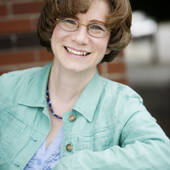The Treatment for Hoarding Disorder Workbook by Gail Steketee and Randy O. Frost, one publication in the Treatments That Work catalog of Oxford University Press, is, ideally, a tool used collaboratively by a person with hoarding disorder and his/her clinician to allow the afflicted client and the clinician to tailor treatment as concretely as possible to the particular emotional, mental, behavioral and social characteristics of the client which are contributing to his challenges (and I am drawing from Buried in Treasures: Help for Compulsive Acquiring, Saving and Hoarding by David F. Tolin, Randy O. Frost and Gail Steketee, page 65 for that concise compilation of the aspects of a client's experience which creates her situation). this book is in fact explicitly designed to be approached under the guidance of a trained clinician.
I've read it as part of my required preparation for the Institute for Challenging Disorganization's Level II Hoarding Specialist Certificate. I'm torn about reviewing it. On the one hand, it contains numerous, easy-to-understand and -follow thought experiments which can allow people who suspect or know that they have hoarding disorder to examine their situation from multiple perspectives. On the other, nothing about a person's life is ever easy-to-understand, and these exercises have the potential to greatly disturb their participants. For example, Treatment provides the comparative data for a client to assess the severity of his responses.
So, as with other available self-help books, it might be best for someone using these tools to have support from friends, family, and professionals. Buried in Treasures has inspired a community of workshop facilitators and participants, but they are not required to have clinical training or engage in therapeutic treatment. And its authors have conscientiously designed the book for two audiences: people with hoarding disorder, and those affected by the consequences. Digging Out: Helping Your Loved One Manage Clutter, Hoarding & Compulsive Acquiring by Michael A. Tompkins, Ph.D. and Tamara L. Hartl, Ph.D. is explicitly designed for people with no clinical training who are engaged in guiding and supporting a person with hoarding disorder who is trying to recover. Overcoming Compulsive Hoarding by Fugen Neziroglu is deliberately designed for someone endeavoring to bring his/her impulses under control without anyone else's involvement. The Treatment Handbook might be most effective as the last reference work a person reviewing his circumstances might want to take advantage of after accessing the others.
All of these self-books can also provide intense insights to people suffering secondhand effects of a person's collecting habits: neighbors, employers, housemates and loved ones. I cannot plead clearly enough: anyone who has been impacted by the behaviors of a person with hoarding tendencies deserves support.




Comments(3)